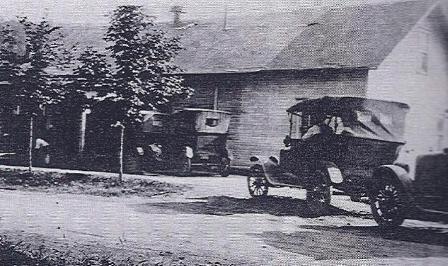History of Tunnelview Historic Area
The Tunnelview tale begins with the Pennsylvania Mainline Canal. A 900′ portion of canal visible at the site was part of the canal’s Western division. The route extended from Pittsburgh to Johnstown, where the Allegheny Portage Railroad began. Once over the Alleghenies, passengers continued their trip to Harrisburg and Philadelphia.
Constructing the canal through the rugged terrain of the Alleghenies was a monumental undertaking. Faced with steep terrain and a sharp bend in the Conemaugh River, engineer Alonzo Livermore routed the canal through Bow Ridge, the narrow strip of land within the river bend. Once through the tunnel, the canal continued over a stone arch aqueduct across the river. This was the only site on the canal with an aqueduct and tunnel next to one another.
The Western division of the canal operated until 1852, when maintenance problems, financial insolvency, and competition from the railroads brought an end to the brief canal era in Pennsylvania. The canal tunnel was sealed off as part of the Conemaugh flood control project in 1952.
By 1864, the Pennsylvania Railroad had constructed a new tunnel and stone arch bridge here for its subsidiary, the North West Railroad. The PRR completed construction of another tunnel here in 1907, when the railroad was realigned. This realignment required the construction of a stone arch bridge which still stands. The bridge withstood the 1936 Johnstown Flood. A sign on the stone arch bridge shows the high water mark.
In 1952 the PRR realigned its trackage again, and constructed the high level iron bridge standing today. Today the bridge carries trains of the Norfolk Southern Railway. A fourth tunnel was constructed through Bow Ridge in 1989 to deliver water to a nearby hydroelectric power station. More information is available in our Tunnelview Historic Site brochure.




